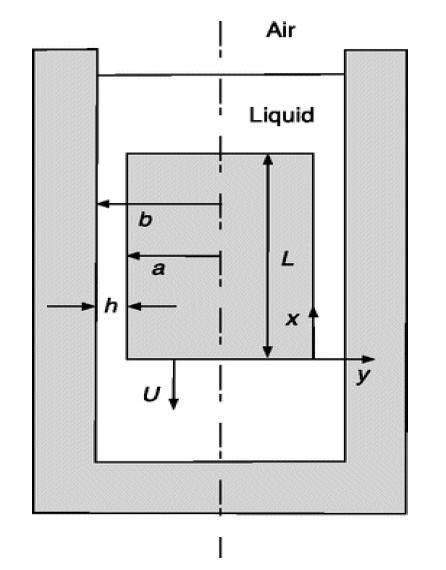A method for determining the viscosity of a liquid is to measure the terminal velocity of a
Question:
A method for determining the viscosity of a liquid is to measure the terminal velocity of a cylinder settling in a tube. As shown in Fig. P7.13, the cylinder radius is a, the tube radius is b, and the velocity relative to the tube is U. To keep it centered, the cylinder is fitted with fins (not shown). The cylinder length is L and the gap between the cylinder and the tube wall is h = b – a. Assume that h⁄L is small enough that the flow in the gap can be modeled as fully developed. Moreover, assume that the pressure variation above and below the cylinder is very nearly that in a static fluid. For simplicity, assume also that h/a ≪ 1, allowing the annular gap to be approximated as the space between parallel plates.
Figure P7.13 Falling cylinder viscometer. The relative lengths have been distorted for clarity in labeling; actually h/a ≪ 1 and h/L ≪ 1.
(a) Solve for vx(y) in the gap in terms of ![]()
convenient reference frame is one where the cylinder is stationary and the tube wall moves upward at velocity U.
(b) By considering the rate at which the falling cylinder displaces liquid, evaluate the mean velocity in the gap and find
![]()
(c) Use an overall force balance on the cylinder (which has density ρ0) to show how to calculate μ from U and the dimensions.
Step by Step Answer:

Introduction To Chemical Engineering Fluid Mechanics
ISBN: 9781107123779
1st Edition
Authors: William M. Deen





